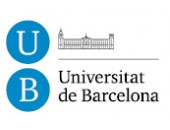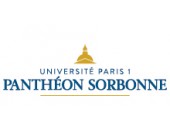Synthetic Report on Cultural Creativity
Matías Zarlenga & Arturo Rodríguez Morató
The Cultural Base project understands that the role of culture has experienced a profound mutation, through which both its position and role in social dynamics have been transformed since the second half of the last century. From having had a super-structural and autonomous position in the past, culture has become a central and structural aspect of contemporary societies. Cultural creativity, associated almost exclusively with the world of artistic and literary creation in the past, has become a key concept in this new context.
Both academic literature, as well as reports and recommendations in public and cultural policies, use creativity as a key concept for understanding and promoting urban regeneration processes, economic development and social inclusion. In this context, cultural creativity has been understood, instrumentally, as a prelude to innovation processes. Because of this, cultural creativity has been involved in a narrow narrative, almost exclusively associated with processes of economic development in urban contexts. Concepts such as creative economy, creative cities and creative class are a representative sample of this hegemonic discourse on cultural creativity.
The Cultural Creativity Axis reflects on the concept of creativity within the framework of a different narrative. Phenomena such as globalization and digitization; mobility, migration processes, cultural encounters, and the formation of identities; urban and social transformations; economic changes; etc. have an important impact on complex and reflective Europeans societies. Cultural creativity is a key concept to understanding all of these processes from a deep and complex perspective, both in the specific field of cultural production and in society as a whole. Reflecting on cultural creativity in non-economic frameworks; analyzing new frameworks of cultural creativity, and thinking of European identities and Cultural Heritage in terms of hybridization, are some of the topics which this document explores.
For this purpose, the Cultural Creativity Axis is articulated with two basic components of the general topic that structure the Cultural Base project as a whole: European Identity and Cultural Heritage. This cross-linking has resulted in two specific Thematic Fields: Creativity and Identity and Creativity and Heritage. Thematic Fields function as a starting point to investigate the academic knowledge and cultural and public policies carried out in Europe within the framework of these two territories. Two key questions served as a guide for exploring the main problems and limitations of these fields in order to define four Thematic Areas to develop a scientific and policy agenda at the European level.
This synthetic report summarizes the processes that started with these two key questions and continues with the development of four academic papers that were discussed with academic and non-academic stakeholders during the first Cultural Base Workshop held in Barcelona from the 30th September to the 2nd October 2015. To conclude, this document summarizes the processes leading to the selection of four thematic areas within the Cultural Creativity axis.
Creativity and heritage
Some Reflexions on “Creative Europe” Philip Schlesinger, Centre for Cultural Policy Research/CREATe, University of Glasgow This paper considers how creative economy policy navigates tensions between culture and economy. I have...
Read moreCreativity and identities
How does cultural diversity contribute to cultural creativity in Europe?, Arturo Rodríguez Morató, Matías I. Zarlenga and Martín Zamorano, CECUPS, Universitat de Barcelona In this paper, we want to examine,...
Read more









